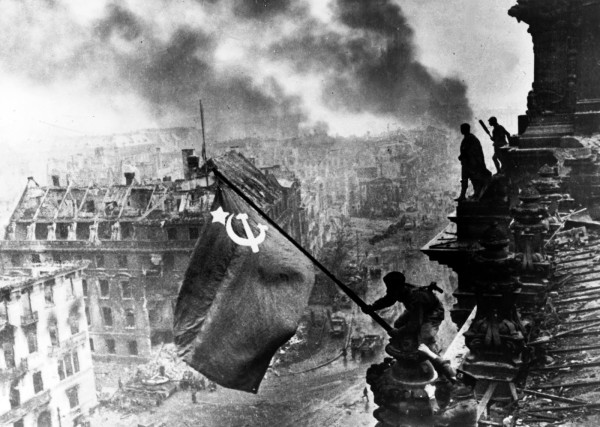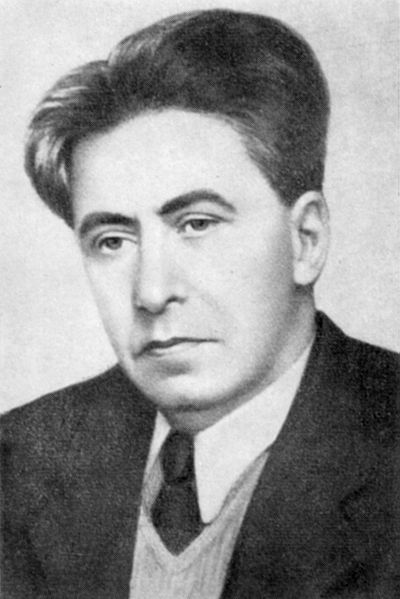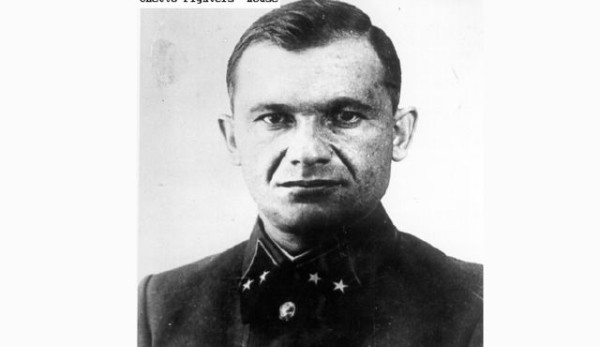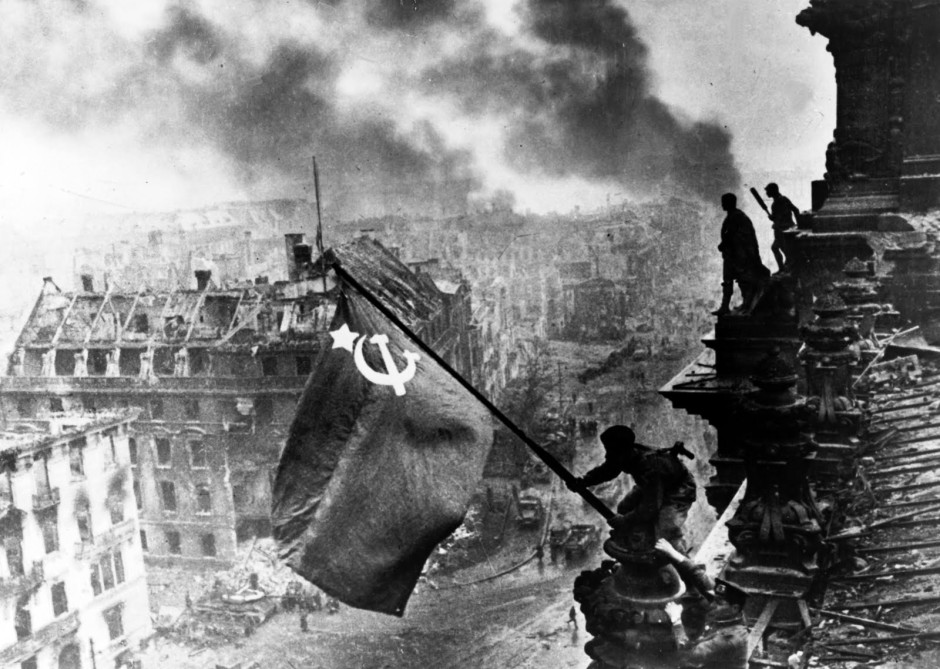
It’s one of the most iconic photographs of World War II. Evgenii Khaldei’s stark black-and-white image of a Red Army soldier holding aloft a Soviet flag over the ruins of Berlin, circa April 1945, still resonates. Dubbed “Raising the Red Flag Over Reichstag,” the photograph speaks to the military victory of the Soviet Union over Nazi Germany.
Khaldei, a Russian Jew, photographed the war in all its permutations from beginning to end, and was one of many Jews who worked as photographers, propagandists and journalists in the service of the Soviet Union during its four-year epic struggle with Germany. In large part, they created the Soviet narrative of the war.
Upwards of 500,000 Jews fought with the Soviet armed forces during that dark period, and of these, 142,500 lost their lives in defence of the motherland. As they laid down their lives on the far-flung battlefields, the Nazis murdered 2.5 million Jewish civilians in the territories comprising the Soviet Union.
Soviet Jews In World War II: Fighting, Witnessing, Remembering, a book of eclectic essays co-edited by Harriet Murav and Gennady Estraikh and published by Academic Studies Press, examines their variegated role in the Great Patriotic War.
The editors claim that this volume is one of the first to draw on Russian and Yiddish materials. The essays, which vary in quality, were originally presented at a conference, Soviet Jewish Soldiers, Jewish Resistance and Jews in the USSR during the Holocaust, in 2008.
The conference was jointly sponsored by the U.S. Holocaust Museum, the Blavatnik Archive Foundation and the Skirball Department of Hebrew and Judaic Studies at New York University.
The essays range far and wide.
In Jewish Combatants of the Red Army Confront the Holocaust, Mordechai Altschuler says that Jewish soldiers discovered the enormity of the Holocaust after returning to their respective towns.
“This feeling of orphanhood, which was common among many Jewish combatants in the Red Army, stood in sharp contrast to the expressions of antisemitism they experienced from local residents and sometimes even among their own comrades,” he writes.
At the start of the war, he explains, crude manifestations of antisemitism in the ranks of the Red Army were rare. But as the tide turned against the Germans, Russian “feelings of chauvinism” surfaced.

Joshua Rubenstein, in Il’ia Ehrenburg and the Holocaust in the Soviet Press, describes that Jewish journalist as “the most significant voice in the Soviet press during World War II.” Writing primarily for Red Star, a newspaper distributed to Red Army soldiers, Ehrenburg was widely read and admired. So much so that the Soviet foreign minister once said that he was worth a division. Cognizant of Ehrenburg’s fame, Adolf Hitler promised to hang him in Red Square after Germany’s capture of Moscow.
Ehrenburg was one of the few journalists to write about the Holocaust in the Soviet media. “Under appalling conditions, constrained by wartime deprivations, Soviet censorship and indifference to Jewish suffering, he did what he could to alert the Soviet public and the West,” Rubenstein writes.
He adds, “It is undeniably true that the Soviet press did not cover the mass murder of its Jewish citizens with anywhere near the prominence it deserved. But it is a falsification of the historical record to claim that the press did not cover it at all.”
Gennady Estraikh, in Jews as Cossacks: A Symbiosis in Literature and Life, examines a fascinating topic. Although Russian Cossacks were inextricably associated with pogroms in czarist Russia, and thereby regarded as enemies of the Jewish people, Jews nonetheless joined Cossack military units.
“I have not come across any statistics of Jewish participation in the Red Army cavalry detachments, though it is known that Jewish cavalrymen fought in various regiments and divisions, including Cossack ones,” Estraikh observes.
Citing the case of a Jew who joined a Cossack detachment, Estraikh says, “According to him, he never had problems with being a Jew among non-Jewish cavalrymen.”
Some Jewish novelists, like Zalman Lifshits and Isaac Babel, wrote about Cossacks with varying degrees of hostility and sympathy, he notes.

Arkadi Zeltser’s essay, How the Jewish Intelligentsia Created the Jewishness of the Jewish Hero: The Soviet Jewish Press, focuses on Eynikayt, the Yiddish house organ of the Jewish Anti-Fascist Committee, which was eventually disbanded by Joseph Stalin. Apart from singing the praises of Jewish war heroes like Gen. Yakov Kreizer, Eynikayt paid attention to Jewish ghetto uprisings in Polish cities like Warsaw and Bialystok.
Interestingly enough, as Zelster points out, Lazar Kagonovich, a Jewish member of the ruling Politbureau and a confidant of Stalin, played a role in shaping popular perceptions of Soviet Jews. In 1937, after attending a performance of a play at the Moscow State Yiddish Theater, he demanded that stereotypical shtetl Jews should be replaced by “heroic images of the Jewish past, like the Maccabees.”

Olga Gershenson, in Between the Permitted and the Forbidden: The Politics of Holocaust Representation in The Unvanquished, writes about the world’s first Holocaust film.
Released in October 1945, shortly after the end of the war, Unvanquished was filmed on location in Babi Yar, where 33,000 Jews had been killed. Based on a novel by Boris Gorbatov which had been serialized in Pravda in 1943, Unvanquished was directed by one of the greatest directors of the day, Mark Semenovich Donskoi, an assimilated Jew.
The film was chosen to represent the Soviet Union at the Venice Biennale in 1946, but in 1948 it vanished from view, not to be seen again until the 1960s, when it was shown on Soviet TV. “The film’s reception reflected the ambivalent Soviet policies of the time, when the topic of the Holocaust was neither completely suppressed nor fully acknowledged, but vacillated in the grey area between the allowed and the forbidden,” Gershenson writes.
David Shneer’s essay, From Photojournalist to Memory Maker: Evgenii Khaldei and Soviet Jewish Photographers, brings us back to square one.
Khaldei, born in what is now the eastern Ukrainian city of Donetsk, gained fame during the war, particularly with “Raising the Red Flag over the Reichstag.” But Khaldei also documented Nazi atrocities against Jews, a topic that Ogonek, the popular Soviet magazine, first covered in the summer of 1941.
As Shneer suggests, Khaldei, along with Jewish colleagues such as Max Alpert and Aleksandr Grinberg, were in the forefront of documenting the building of Soviet society. When war broke after Germany’s invasion of the Soviet Union, they turned their gaze to the battlefield.

In 1948, amidst Stalin’s antisemitic campaign, Khaldei was laid off from his job at the TASS news agency. TASS rehired him after Stalin’s death in 1953, but Khaldei never regained his old prestige.
Such was life in the Soviet Union, particularly for a Jew.
This review appeared in the Times of Israel.
